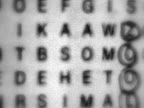Will high-speed rail in California cause more sprawl?
Probably. Not that other things don't cause sprawl too. But fast trains out from the cities to places with cheap real estate could have some bad influences
Jason Kambitsis makes the case about the sprawl potential in Wired. But, he says the problems can be overcome:
Proactive land use policies focused on increasing urban density coupled with incentives for transit-oriented development and suburban infill must be embraced by communities along high-speed rail lines — especially those with planned stops.Previously, err, a year and a half ago, Ben Adler wrote a related critique of California HSR, as something that was mainly going to help rich businessman who will still have to take a cab when they get to LA at the other end (highly recommended article). He points out that the 2nd ave subway in New York will cost about a third as much and help hundreds of thousands of people each day, not a few thousand. (CA HSR supporters responded that this critique was creating a false dichotomy; that HSR and good public transit in the cities need to go together, and should not be made to compete for funds).


2 Comments:
But high-speed rail needs time to get up to the high speeds, and time to slow back down. It won't be high-speed if it's running a local service. Where high-speed rail is truly useful is inter-city transportation--even the Acela is not being used anywhere near its full potential*. A train that could get from SF to LA in under 3 hours can be truly competitive against a flight that takes half the time in-air but involves getting to and from the airport, going through security, and then squeezing into a tiny seat waiting for your ears to pop.
And air travel has an enormous carbon footprint compared to driving.
And cars will all be electric soon, right? =D
I see the point, but I still support high-speed rail.
* This is also because of track limitations: tracks in the northeast are too twisty, and go through too many small towns (with too many small children who could run onto too many tracks at the wrong moment), to go the kind of speeds they're capable of.
bsom:
I don't see HSR as a sprawl inducer - quite the opposite, assuming the stations are downtown (as SF and LA will). If it replaces even one or two runways, it's a major anti-sprawl program. All those customers will be downtown to eat, work, sleep, and play, instead of in airport mall-land.
ertzeid:
I agree that Acela is not living up to its potential - except for the small-children-and-train-tracks comment. That's a big problem for a lot of routes, but not generally along the Northeast Corridor. The NEC right of way is mostly grade-separated. That's probably necessary for the speeds that Acela does now. But for some seriously grand vitesse, you usually need concrete beds, not gravel, and fenced-in track. That's what California will look like. Also, yes, the curves on the NEC are too tight for 200 mph travel.
Post a Comment
<< Home